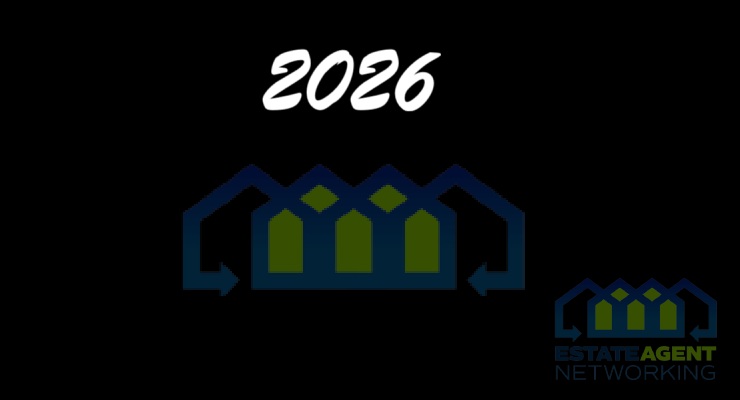Nationwide Housing Affordability Report
Affordability stretched, but gradually improving
- Modest improvement over past year, but affordability remains stretched by historic standards
- Considerable variation in affordability across occupational groups
- Affordability most stretched in London and South of England, with North of England & Scotland the most affordable
Commenting on the figures, Andrew Harvey, Senior Economist, said:
“There has been a modest improvement in UK housing affordability over the last year, due to earnings growth marginally outpacing house price growth and a slight reduction in average borrowing costs. Nonetheless, housing affordability remains stretched by historic standards. A prospective buyer earning the average UK income and buying a typical first-time buyer property with a 20% deposit would have a monthly mortgage payment equivalent to 36% of their take-home pay – well above the long-run average of 30%.
“Furthermore, house prices remain high relative to average earnings, with the first-time buyer (FTB) house price to earnings ratio (HPER) standing at 5.0 at the end of 2024, still far above the long run average of 3.9. Consequently, the deposit hurdle remains high. This is a challenge that has been made worse by the record increase in rents in recent years, which, together with the cost-of-living crisis more generally, has hampered the ability of many in the private rented sector to save.
“Therefore, it’s not surprising that a significant proportion of first-time buyers have to draw on help from friends and family to raise a deposit. In 2023/24, around 40% of first-time buyers had some assistance raising a deposit, either in the form of a gift or loan from family or friends, or through an inheritance.
“Despite these affordability challenges, mortgage market activity and house prices proved surprisingly resilient in 2024. Annual house price growth ended the year at 4.7%, a marked improvement from the small declines seen at the start of 2024. The number of mortgage approvals returned to 2019 levels, despite typical mortgage rates being around three times higher. Perhaps even more remarkably, first-time buyers’ share of house purchase mortgages was actually higher in 2024 (54%) than it was pre-pandemic (51%). Looking ahead, providing the economy recovers steadily, as we expect, the underlying pace of housing market activity is likely to continue to strengthen gradually as affordability constraints ease through a combination of modestly lower interest rates and earnings outpacing house price growth.
Considerable variation in affordability across different occupational groups
“We explored how affordability varies for people in different professions. Perhaps unsurprisingly, mortgage payments relative to take-home pay are lowest for those in managerial and professional roles, where average earnings tend to be higher.
“Note that these are benchmark measures, which use the average earnings in each occupational group and the UK typical first-time buyer property price. In practice, those in higher paid occupations may choose to buy more expensive properties.
“Affordability is most challenging for those working in areas classified as ‘elementary occupations’, which include jobs such as construction and manufacturing labourers, cleaners and couriers, and those in care, leisure and other personal service jobs. In these groups, typical mortgage payments would represent over 50% of average take-home pay.
“The differences in affordability reflect the divergence in earnings by occupational group. For example, those working in professional occupations typically take home around twice as much per year than those working in sales and customer service.
How does the affordability picture vary across regions?
“All regions have seen a modest improvement in affordability compared to 2023 when looking at the costs of servicing the typical mortgage as a share of take-home pay.
“London actually saw the largest improvement in affordability, reflecting relatively weak house price growth in 2024. Nevertheless, the capital remains the least affordable region by a significant margin (see chart above). Affordability pressures continue to be more pronounced in the South of England and East Anglia, whilst in the northern regions of England and Scotland, mortgage payments as a share of take-home pay are much closer to their long run average.
“House price to earnings ratios remain broadly similar to a year ago across the UK, with London continuing to have the highest house price to earnings ratio at 8.0 and Scotland the lowest at 3.0.
“To explore how these regional variations are impacting potential buyers, we looked at where in the income distribution a prospective purchaser would sit if they were purchasing the typical first-time buyer property in each region, with a 20% deposit and borrowing four times their income. If the typical buyer is located higher in the income distribution it suggests affordability is more stretched, with more people priced out of the market.
“In broad terms, the picture that emerges is that this hypothetical typical buyer is located further up the income spectrum as you go from north to south. For example, in Scotland and the North, this typical buyer would be in the 20th income percentile, while in the South West they would be in the 75th percentile and above the 90th percentile in London.
Regional income benchmark 2024
“We’ve also examined how this has changed over the last five years. In the southern regions, there has been no movement in terms of where the buyer would sit in the income spectrum. By contrast, in Scotland and the North, there’s actually been a slight improvement, moving from the 25th to 20th income percentile. In Yorkshire & The Humber, Northern Ireland, Wales and the East Midlands however, there has been a deterioration in affordability, with buyers now located in higher percentiles compared with 2019. This reflects that house price growth in these areas has exceeded earnings growth over this period.
Local affordability update
“It is important to recognise there is also considerable variation in affordability within regions. Our local affordability metrics, which use house price and earnings data from the Land Registry and ONS, give the most comprehensive view at a local level.
“As shown on the chart below, London continues to have the greatest gap between the most and least affordable boroughs by a considerable margin. Meanwhile, the North has the smallest difference between local authority house price earnings ratios (HPERs).
Least affordable local authorities
“Kensington and Chelsea is the least affordable local authority in London and, by extension, Great Britain, with a HPER of 13.6.
“Chichester in West Sussex is the least affordable area in the Outer South East region, with house prices 8.5 times average earnings. Meanwhile, in the Outer Metropolitan region, Three Rivers in Hertfordshire, which includes the popular commuter town of Rickmansworth, is the least affordable local authority.
“In the South West, Bath & North East Somerset is a house price hotspot, but also considerably more expensive than other parts of the region, making it the least affordable area. It is a similar story in Cambridge, where average FTB house prices are much higher than parts of East Anglia. York is another sought after city, but with a HPER of 6.3, it is the least affordable location within Yorkshire and the Humber.
“Wychavon in Worcestershire, is the least affordable part of the West Midlands, and includes Evesham, Droitwich Spa and parts of the Cotswolds. Meanwhile, in the East Midlands, Derbyshire Dales is one of the highest priced areas, with much of it sitting within the Peak District National Park, including towns such as Matlock, Ashbourne and Bakewell. Continuing the theme, Westmorland & Furness, which takes in significant swathes of the Lake District National Park, is the least affordable area in the North.
“In Wales and Scotland, the capital cities are the least affordable places, with Cardiff & Edinburgh having FTB HPERs of 5.6 and 5.4 respectively.
Most affordable local authorities
“We’ve also explored the most affordable areas, based on the local authorities within the lowest FTB HPERs within each region
“Aberdeen is the most affordable authority in Great Britain, with average FTB house prices just 2.5 times average earnings in the area. Burnley and Hartlepool are the most affordable areas in the North West and North regions respectively, both with a HPER of 2.8.
“North East Lincolnshire, which includes seaside towns Grimsby and Cleethorpes, is the most affordable local authority in Yorkshire and The Humber. Whilst further down the east coast, Great Yarmouth in Norfolk has the lowest HPER in East Anglia and is also the lowest priced area in the region. Continuing south, Tendring in Essex, which includes Clacton-on-Sea and Harwich, is the most affordable area in the Outer South East.
“Swindon is the most affordable town in the South West, with a house price earnings ratio of 5.3. Meanwhile in the Outer Metropolitan region, Surrey Heath, which includes Camberley and Bagshot, is the most affordable area, due to relatively high earnings.
“Enfield is the most affordable London borough, though its house price earnings ratio of 6.2, is still higher than the majority of local authorities across the country.”









